One of the things I learned soon after starting to work in an online business is the importance of public relations for making yourself known.
When you’re a small fish in the vast ocean of the Internet, getting someone interested in you is quite a challenge.
However, if you lean on those who already have a reputation, you can substantially speed up the process.
It’s the magic of good old-fashioned public relations applied to the online world.
In this article, I’ll talk about the figure of the digital PR. We’ll discover what their job entails, its importance for the growth of a company, and how its functions are closely related to SEO.
Let’s get started!
What does PR stand for
PR stands for public relations. In Spanish, it can also be seen as RR.PP.
It refers to the set of techniques we apply to make a brand known, as well as all the news associated with it.
Although it’s true that it has a lot in common with advertising, you shouldn’t confuse the two concepts:
- Advertising seeks immediate impact, generally to increase sales.
- Public relations are a long-term strategy, aimed at strengthening the brand by establishing solid links with other stakeholders.
What it means to be a digital PR
A digital PR is a public relations professional who specializes in the online world.
Their work focuses on improving a brand’s image on the Internet, taking advantage of the momentum provided by tools such as inbound marketing, digital newspapers, social media, influencers, or search engine presence.
In this way, they achieve a series of high-value benefits for a company or business.
Benefits a Digital PR Brings to a Business:
- Brand awareness.
- Improved customer trust.
- Long-term relationship building.
- Increased traffic.
- SEO optimization.
- Boost in sales.
What Does a PR Do in an Agency?
As part of an agency, public relations professionals are responsible for designing a professional action plan that strengthens and boosts brand image by establishing connections with various entities, such as:
- the media.
- internal company departments.
- investors.
- government agencies.
- customers.
- etc.
Digital PRs can employ a multitude of strategies to enhance brand awareness: from press appearances to engaging with influencers, managing social media, or organizing special events, among many others.
If you’re curious about this whole array of techniques related to digital marketing and PR, don’t worry, we’ll get into them later on.
But before we do, since this blog specializes in web positioning, in the next section I want to tell you how public relations relate to SEO and how they can be leveraged in your project through DinoRANK.
What Does a PR Do in Terms of SEO?
Even though we’ve only touched on what a digital PR is, you might already sense that their work is closely linked to the world of SEO.
After all, by appearing on other websites or social networks, we’re not just gaining visibility with users but also in the eyes of search engines.
Next, I’ll detail the most important tasks a digital PR focused on SEO should perform to ensure this visibility is effective from a web positioning standpoint.
Creating SEO-Optimized Content
The main goal of an SEO is for the website they manage to rank at the top of search engines for as many keywords as possible.
But imagine that in the Top 10 for a keyword, besides our own site, there were also other pages talking about us.
Our visibility would then increase significantly.
That’s why, when planning a press release, a guest post, or even a social media publication, a digital PR SEO should conduct keyword research to increase the chances of these contents appearing in the SERPs.
Once the specific keyword to focus content on is identified, it’s time to optimize it. For this purpose, DinoRANK’s TF*IDF module provides invaluable information, as it allows us to identify all the semantically related terms we should include in a text to help it rank.
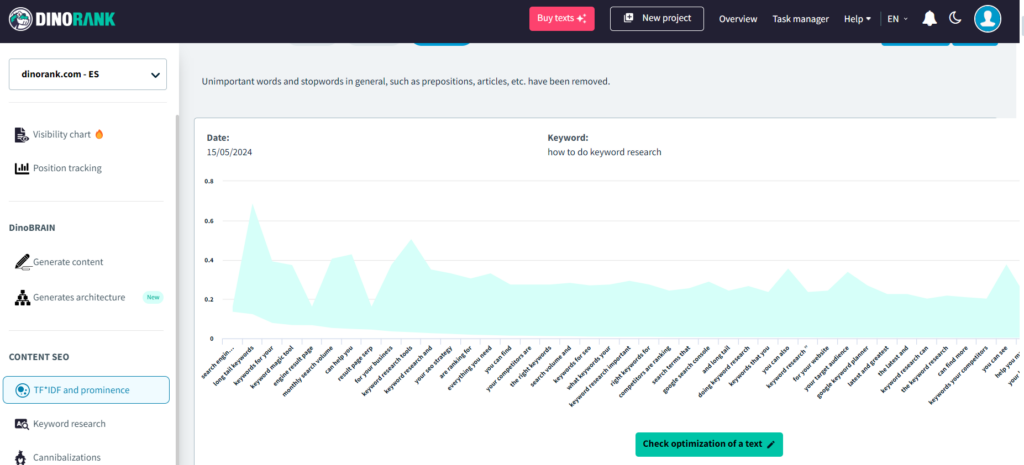
Selecting Quality Media for the Link Building Strategy
The most obvious task of a digital PR in terms of SEO is the acquisition of external links pointing to our website.
Backlinks are still a very relevant ranking factor today.
But not just any link will do for Google. And neither should it for us.
When a digital PR professional is searching for new outlets to place a link, they should focus on those that are authoritative and relevant to our business.
In other words, websites that have traffic and are semantically related to our topic.
To find web pages related to our sector, we can use two features of DinoRANK.
The first is the keyword research module, which shows us the best-ranked websites for a keyword we’re interested in.
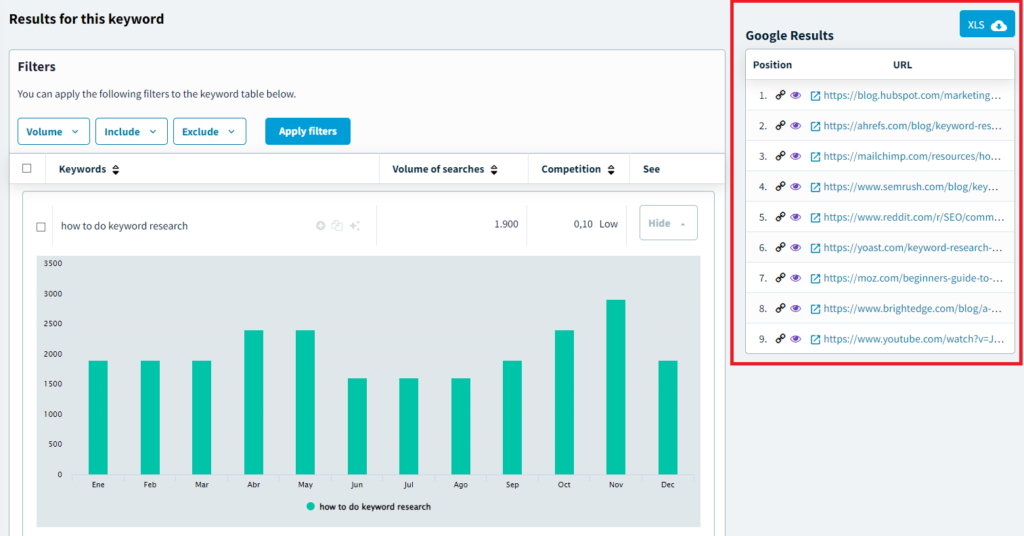
The other is the position tracking, which has a very useful function to know who our most direct competitors are based on the keywords we’re monitoring.

Once we know these outlets, DinoRANK’s visibility graph will allow us to analyze their relevance.
When we enter the URL of any website, we’ll see a representation of its visitor volume over the past few months. This way, we can get an idea of the traffic it generates and whether it’s on an upward or downward trend.
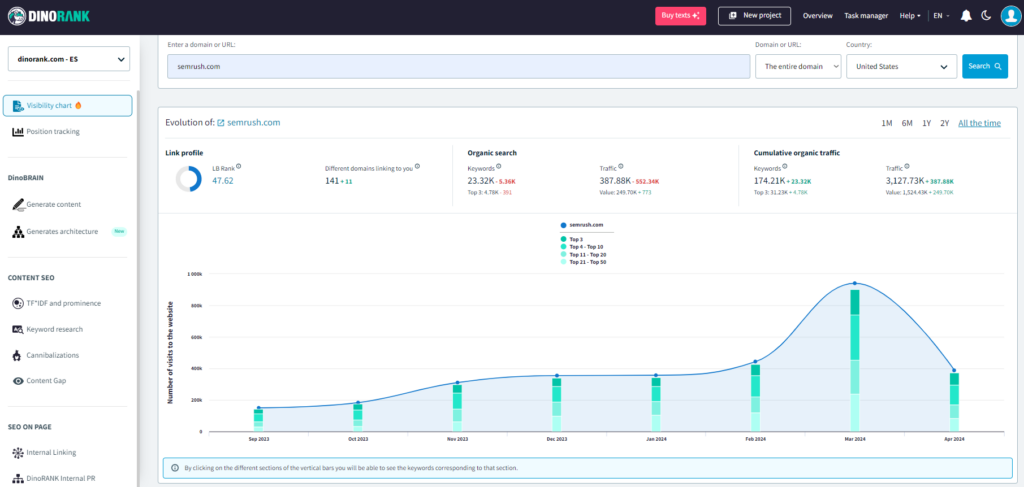
Further down, we’ll see the best-ranking keywords, which will help us decide if thematically it’s a related medium or not.

And finally, we can compare several sites against each other to see which one is evolving better.
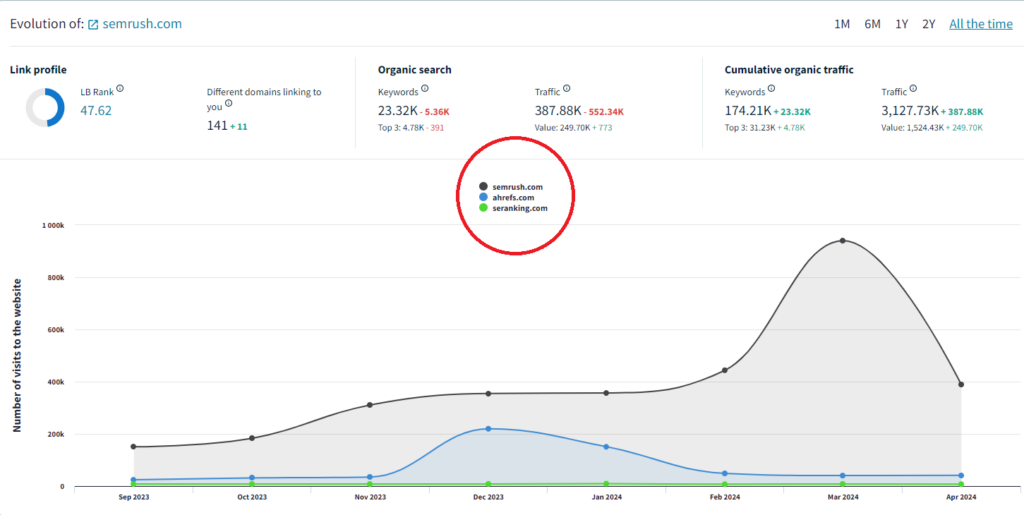
All this data is a great support when looking for relevant sites to reach out to for links.
But we mustn’t lose sight of one thing: the easier it is to get a link, the less useful it will be.
That is, if our competition can easily show up in the same outlets as we do, we won’t have any unique selling points.
Therefore, a digital PR aims to secure links that are hard to duplicate in media outlets that aren’t featured on the typical link-buying and selling sites and whose managers are very strict about the value of the content they choose to link to.
Link Monitoring
The work of a digital PR in link building doesn’t end once the link is secured. Afterwards, it’s important to monitor the link to see if we’ve achieved our SEO goals and if the chosen medium maintains its relevance.
Once again, the visibility module from DinoRANK can be incredibly useful at this stage. If we enter the URL of the page where our link is located, we can see the keywords it ranks for and analyze whether it meets our expectations.
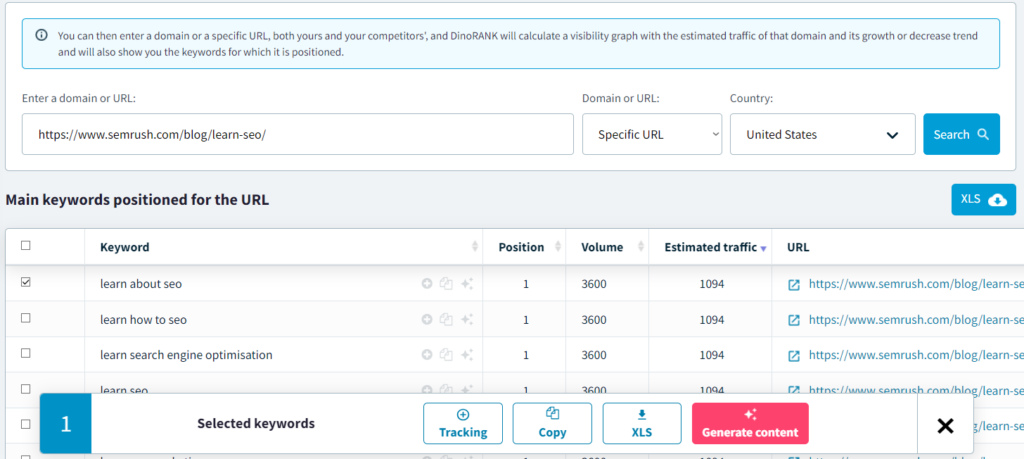
We can also revisit the domain visibility chart to observe its evolution and check whether the media outlet is gaining, losing, or maintaining its traffic.
It’s clear that we should keep our high-quality links. But if a site has low authority or is penalized by Google, we may want to request the site’s managers to remove the link or perform a Disavow in Google Search Console to prevent negative impacts on our website.
Caring for E-E-A-T
E-E-A-T (Experience, Expertise, Authoritativeness, Trust) is an aspect that Google is increasingly valuing. It relates to the authority and trust a website conveys, both in terms of its content and its managers.
Much of the work done in digital public relations directly impacts the optimization of E-E-A-T. Although we’ll look into this in more detail later on, here are some examples to give you an idea of what I mean:
- When influencers talk about you or your brand, you increase the authority and trust you convey.
- Creating high-quality content also improves these aspects.
- Helping others through forums, events, or social media, you’re demonstrating your expertise and enhancing your credibility.
- And of course, backlinks from significant sites increase your website’s authority.
In short, cultivating public relations will help you improve your E-E-A-T and ensure that both users and Google see you in a better light.
Most Common Public Relations Strategies
We’ve discussed the role of a PR professional within SEO, but it’s important to understand that the duties of a Digital PR are much more extensive.
Designing a complete public relations plan isn’t something that happens overnight. It requires a thorough analysis of business objectives to determine the set of techniques to be used.
As I promised at the beginning of this article, here are some of the most common tactics typically employed by a digital PR as part of their job. This will give you an idea of the breadth of their responsibilities and the impact they have on a brand’s image.
Public Relations and Press Management
Digital marketing and the media are two concepts that often go hand in hand.
That’s not surprising. Getting our business mentioned in popular media has a direct impact on our brand visibility, given their massive user base.
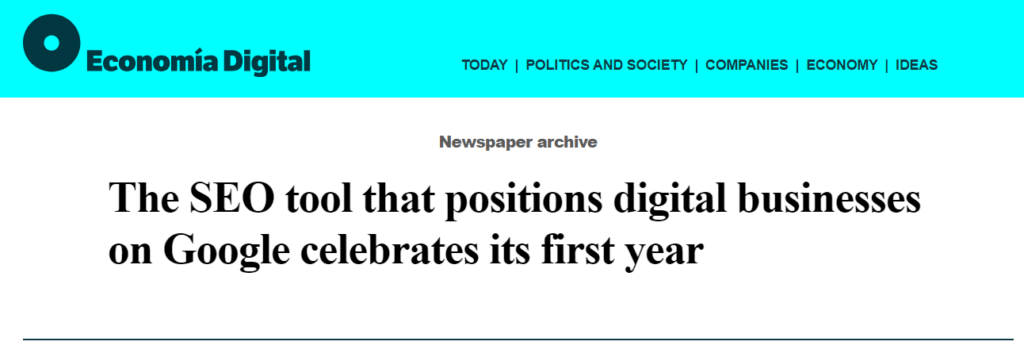
Google also places special importance on these outlets, awarding them top positions in its search results or featuring them in a prominent news snippet that helps them gain even more prominence.
For that reason, professional public relations marketing takes on a significant role when it comes to media presence.
The most common strategy is to reach out to journalists to promote the business and present ourselves as experts in a particular subject. This way, we can spark their interest for an article or get added to their contact list for future collaborations.
It can be a thankless task: sending out a slew of cold emails to get few responses, many of which are negative, and only a handful positive.
But every journalist who says yes is a true gem, one that must be nurtured by providing valuable content upon request.
Another way to reach the media is by signing up on platforms like HARO or Reportaro. These are websites that connect journalists with specialists in certain fields so they can rely on them when they need an expert’s opinion.

Lastly, there are press releases, a simple way to spread news that can be picked up by various media outlets. The problem is that you have very little control over who will publish your news and who will not.
And that is precisely one of the most important tasks of a digital PR in terms of press relations: media control.
Depending on your business and target audience, you’ll be more interested in some types of newspapers or magazines than others.
A PR marketing specialist will be able to identify the most suitable media outlets for your brand and will strive to secure a feature in them, setting aside those that might be less relevant for achieving your goals.
Influencers and Collaborations
When it comes to promoting our brand on the Internet, we must definitely consider influencers.
Imagine you want to buy a headset for online gaming. No matter how many reviews, comparisons, or ads you see, few things will make you trust the product more than seeing your favorite streamer using them live.
A digital PR professional is aware of this and that’s why they are always seeking new collaborations with influencers and well-known figures in the industry to spread information naturally and build trust among potential consumers of the brand.
This is known as outreach marketing, which seeks to establish relationships with other people or organizations that have goals aligned with our business.
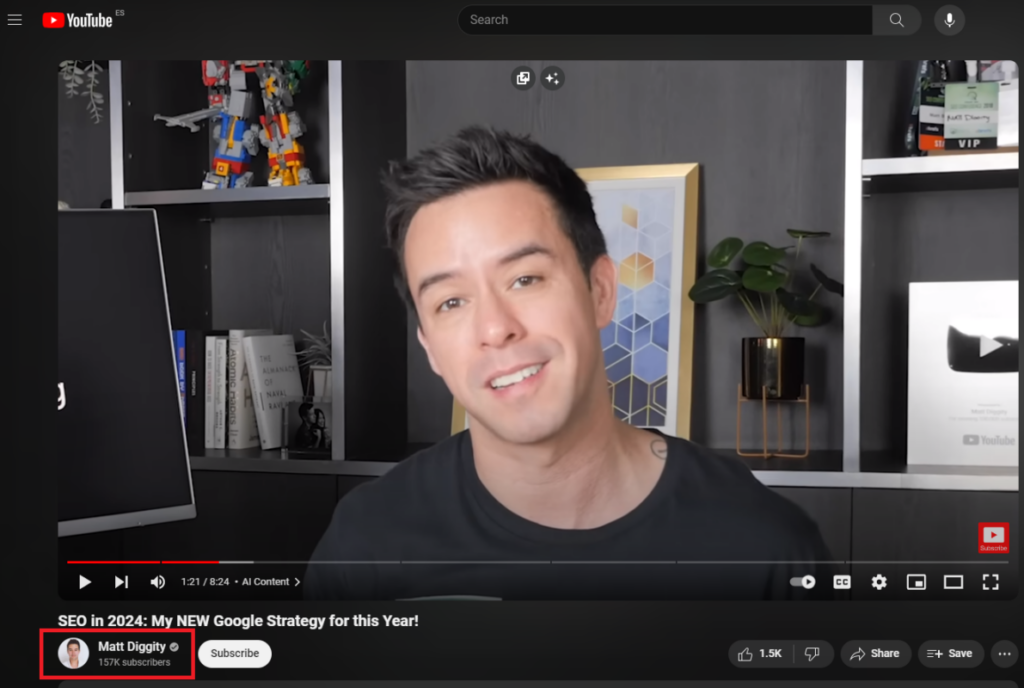
In this context, guest blogging or affiliate marketing are widely used strategies. In exchange for valuable content or a sales commission, the influencer will talk about our products or services to their audience. A win-win that tends to yield great results.
Interesting content and creative campaigns
One of the best strategies for gaining visibility is creating content that others are willing to share.
Obviously, it’s not easy. You have to publish a lot until you find something that really works, in addition to having creativity and a good dose of luck.
Infographics, analyses with real data, or interesting videos are likely to be shared.
For example, this interview on the CareerVidz channel with an SEO expert has thousands of views and can undoubtedly help increase visibility for both parties.

However, the most shared content isn’t always useful. We all probably have in mind creative advertising campaigns that caught our attention and have stayed in our minds forever.
If you’ve seen any of Netflix’s billboards in New York Times Square, you’ll know what I mean.
When you manage to design compelling campaigns, it’s very likely that various media outlets will want to spread the word, thus amplifying its reach.
Participation in Forums
Internet forums are an excellent place where you can share your knowledge on any topic.
Many users visit these forums seeking solutions to a wide array of issues. And if you help someone solve their problem, you’ll be able to establish a trustworthy relationship that’s hard to break.
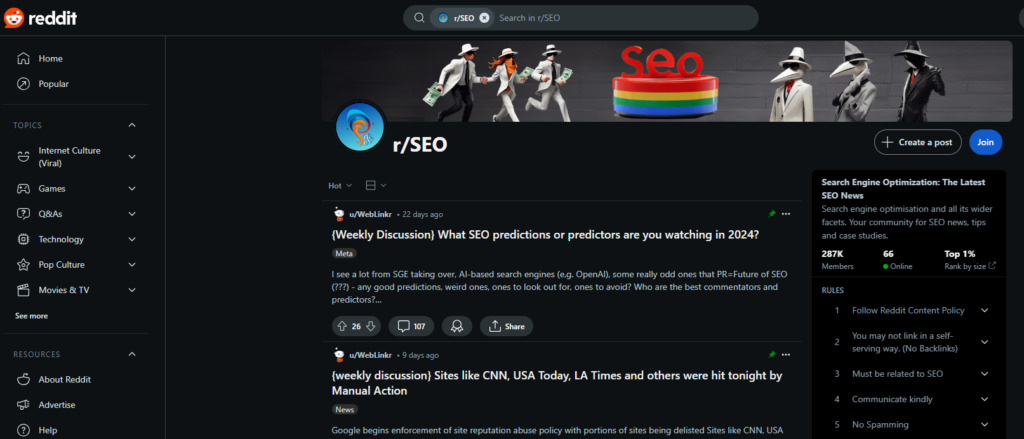
A digital PR specialist should be aware of the most relevant forums for the business they manage, pay attention to potential user inquiries, and offer responses that add as much value as possible in a selfless way.
This way, they’ll introduce the brand and attract potential customers predisposed to find out what it offers because its representatives have already lent them a hand in the past.
Social Media
Today, social media is the fastest way to reach a broad spectrum of people. But, for it to be effective, it’s crucial to choose wisely which social networks to be present on and with whom to interact.
Digital PR professionals are responsible for picking the most relevant social networks for our business, as well as selecting and reaching out to those users with whom they want to collaborate more frequently.
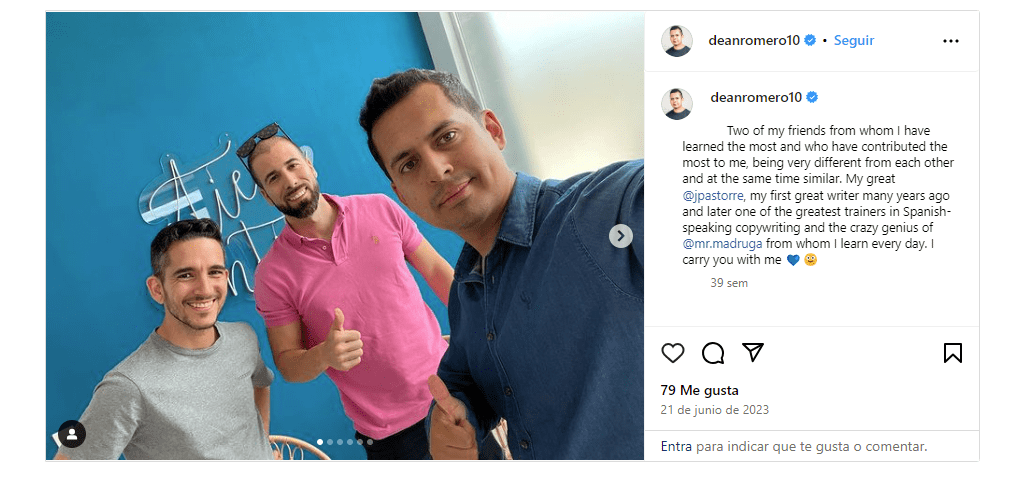
If we want to make our mark on social media, we should engage regularly, tagging popular profiles, responding in their threads, or sharing their posts.
And of course, we must publish original content that others will want to share, thus presenting ourselves to their audience.
Events and Sponsorships
The organization of events that interest your audience is an effective way to get the word out about your business.
At DinoRANK, we’ve been hosting SEO-related events for a long time to reach new users.
The key is that the event is not just a mere advertising showcase, but that it provides genuine value. In our case, we often offer sessions with SEO experts who share their experience or demonstrate a technique in real-time.
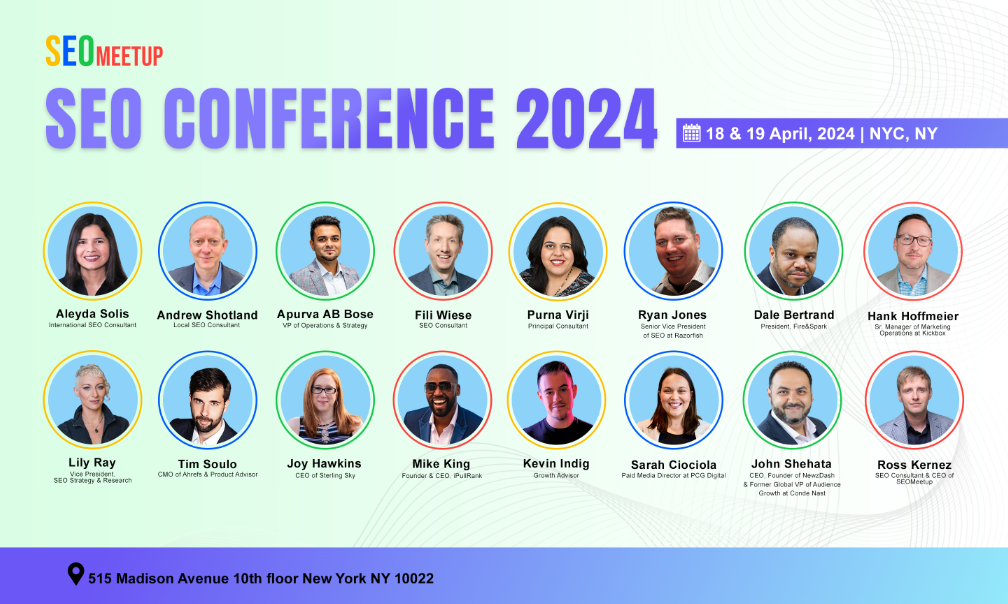
Another option to gain visibility through events is to collaborate as a sponsor.
At several DinoRANK events, we’ve had sponsors from the industry who contribute either through financial support or by providing gifts that are raffled off among the attendees.
It’s a very practical alternative if you don’t have the time or resources to organize your own event.
Conclusion
As you can see, digital public relations encompass a multitude of tasks aimed at increasing your brand’s visibility.
It’s a complex job, requiring people skills and proper planning. That’s why it’s often carried out by specialized agencies that have experience and a wide network of contacts.
However, if you’re just starting out, you might not be able to afford to hire a professional digital PR.
But that doesn’t mean you shouldn’t work on public relations right from the start.
In this article, I’ve shared some strategies that you can start to implement. Choose the ones you think are most suitable, put them into practice as soon as possible, and watch your brand take off.

